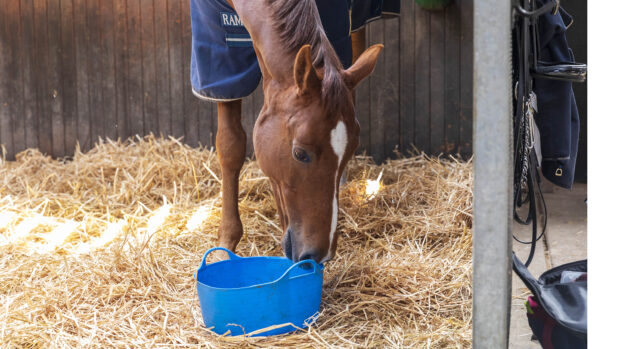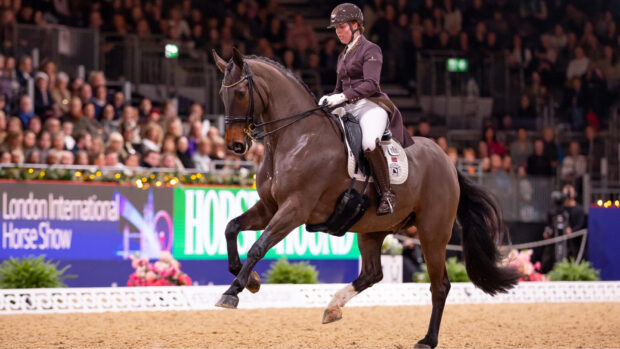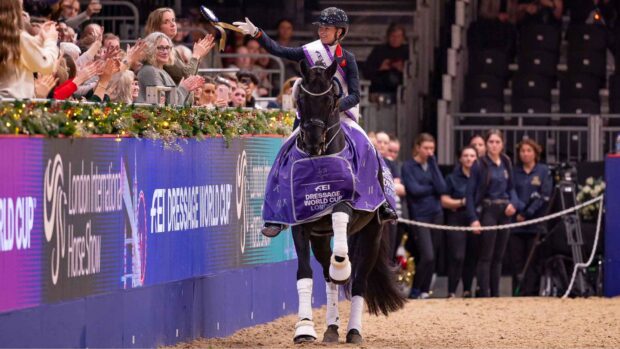A equine physio who says she has had enough of seeing horses started too early, pushed too quickly and breaking down injured too young has spoken out in hopes of educating owners.
Zoe King of Performance Veterinary Physiotherapy posted on social media with the phrase “for crying out loud”, after she had seen this year, by mid-January, “a (rising) two-year-old being long-reined with tack on, a (rising) three-year-old trotting around with a rider on board and its chin on its chest, and a (rising) two-year-old being loose jumped over 5ft+”.
“Why are people in such a rush?” she asked.
Zoe told H&H she was promoted to post by recurring issues.
“I’ve got a rising four-year-old Suffolk stallion and have been put under pressure to get him licensed,” she said. “But part of that process is about 40 minutes of lunging to get the heart rate up – they’re expected to do that aged two – and I refuse to do that till he’s physically ready. I know of someone else put under the same pressure and at the end of the lunging, the horse was horrifically lame. He’d torn a ligament in a hock and pulled bone chips off, and he then couldn’t be licensed, so we’ve lost those genetics.”
Zoe is also concerned about some foreign studbooks’ licensing procedures.
“Twenty years ago, a stallion had to prove himself in competition before he was taken seriously; why are we pushing through this conveyor belt of two- and three-year-olds, and ending up with broken young horses?” she said. “Why are we pushing young horses so much, why has no one got patience, why is no one waiting?”
Zoe believes that with horse prices as high as they are, more people are buying quality young horses rather than their older, more expensive counterparts.
“Then they’re in a rush to be doing something with them,” she said. “People buy young horses then thrash them about, because that’s what their friends do, or they see on social media four-year-olds jumping 1.20m classes. Top dressage riders used to ride 20-year-old horses in international events; when was the last time we saw that? Is it because of breeding, or because they’re doing too much, too young? Most of my clients are seven- or eight-year-olds who are starting to break down with arthritis or joint conditions.”
Zoe said two “heartbreaking” cases that stand out are both showjumping horses.
“One was a novice rider put under pressure by her trainer; by the time the horse finished its fifth year, it was broken,” she said. “They’ve been trying to rehab the horse for two years and every time, it breaks down again. The other was a young horse bought for six figures, which had broken down within a few months, after it had been jumped and jumped to get it to that marketable value.”
Zoe explained that the issues are to do with with the skeleton; young, growing bones calcify and harden at different rates. She stressed that horses can look strong and mature, but this does not necessarily mean they are ready for work, as “growth plates take time to close and bone takes time to reach the right density”.
She added that she also sees pressure on those backing horses to do it quickly, so instead of months of walk and ground work to build strength gradually, clients often want horses ready to ride away weeks after they have been brought in from the field.
“The average ligament or tendon takes six months to lay down collagen and strengthen,” she said. “Doing it that quickly doesn’t give them time to strengthen and support the joints.”
Zoe said one argument she often hears, from trainers in particular, is that some big and bolshy three-year-olds should be backed early as they will be stronger, so more difficult to work with, when they are older.
“What planet are they on, in what century?” she said. “Do the groundwork, teach them manners, – it’s about communicating and working with your horse, not overpowering them when they’re weaker.
“I think it comes down to education, people aren’t educating themselves before they buy young horses, and some trainers aren’t helping. Just think ‘Am I doing this for me, or in the horse’s best interests?’”
You might also be interested in:

6 things riders may experience while backing a young horse
‘Who knows, you could be sat on a future champion and you just don’t know it yet...’

How to teach a young horse to turn by following your eyes and body position
We picked five-star event rider Coral Keen’s brains for her to share some of her training exercises for young horses.

Subscribe to Horse & Hound magazine today – and enjoy unlimited website access all year round
Horse & Hound magazine, out every Thursday, is packed with all the latest news and reports, as well as interviews, specials, nostalgia, vet and training advice. Find how you can enjoy the magazine delivered to your door every week, plus options to upgrade your subscription to access our online service that brings you breaking news and reports as well as other benefits.




